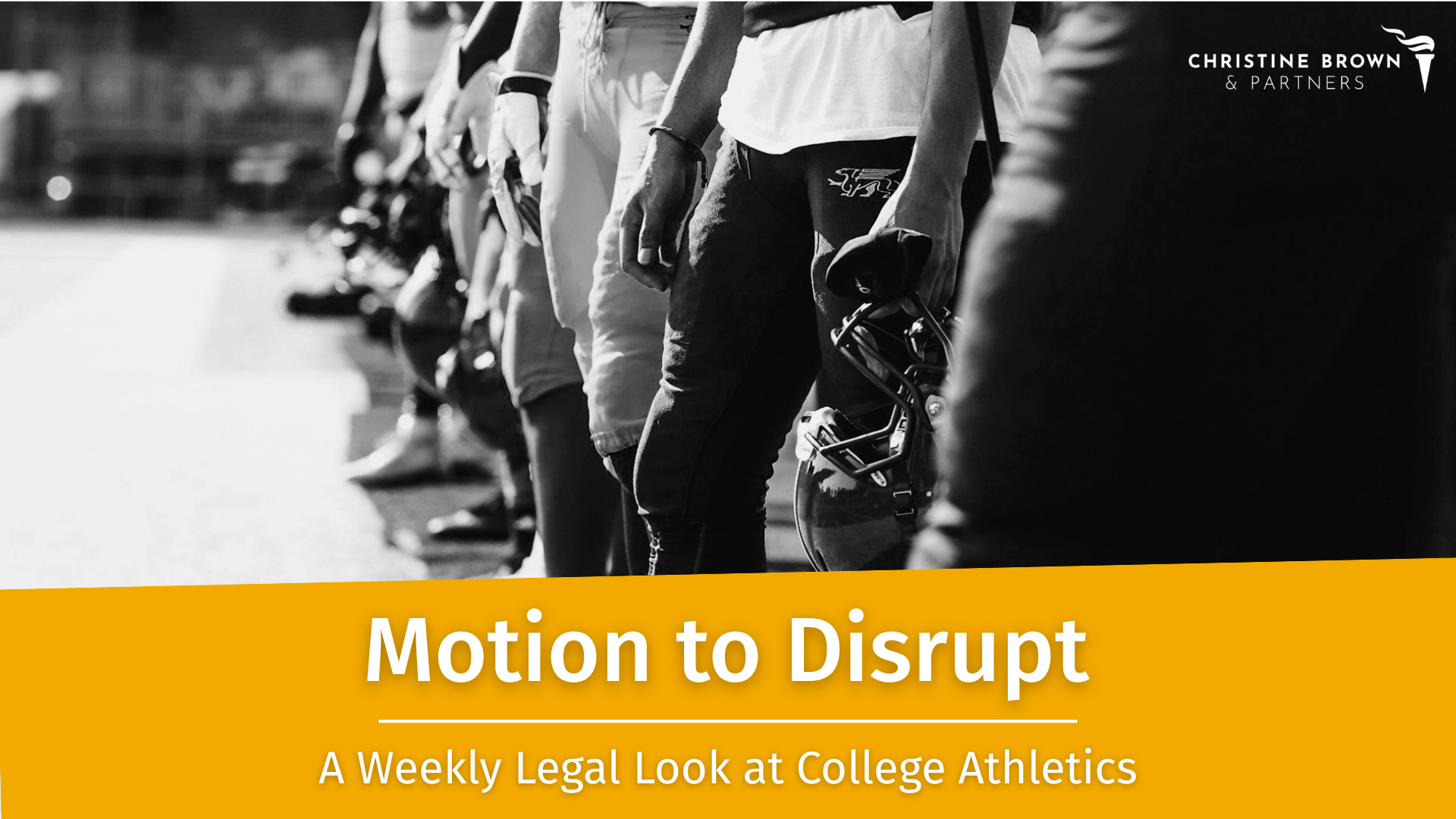Title IX Rules Are Clear
Colleges Are Limited In Ability To Suspend Athletes Before Investigations Are Complete. So Why Is It Still Happening Without More Scrutiny?
OPENING STATEMENTS
A year ago, new federal Title IX regulations went into effect with one very straightforward rule: institutions and coaches cannot suspend athletes simply because a complaint of sexual misconduct has been filed. A full investigation must be conducted, followed by a finding, and only then can it impose discipline such as suspension or removal from a team.
Yet, despite this, we continue to hear from student-athletes who are sidelined before their cases have even been investigated. In an ongoing one that we’re dealing with, a football player with some potential professional aspirations was removed from his team immediately after an accusation of sexual assault. Months later, the investigation drags on without resolution, while he remains suspended. This is exactly the scenario the regulations were meant to prevent.
Sexual assault on college campuses is a grave problem. Studies show that one in four women experiences sexual assault during her time at school. Institutions must take every complaint seriously, investigate thoroughly, and implement protective measures so that complainants feel safe in their environments. No one disputes that responsibility.
But we cannot confuse safety measures with punishment. Title IX is built on the idea of balancing two interests: protecting students from harassment and safeguarding the due process rights of the accused. To suspend a student-athlete before a finding of responsibility is made is to treat an allegation as proof. That is not justice; it is a presumption of guilt.
There are tools short of suspension that schools should be using. Every complainant should be assigned an advocate to help with accommodations, class schedule adjustments, housing changes, and campus escorts, so that they are shielded from unnecessary contact with the accused. These are the kinds of “supportive measures” Title IX requires. But taking an athlete off the field, or any student out of the classroom, is a disciplinary action that cannot rest on an accusation alone.
Unfortunately, some administrators and athletic departments point to internal team rules or codes of conduct as justification for suspensions. That argument fails. Federal law supersedes institutional policy. Title IX explicitly protects access to educational programs, and athletics is one of those programs. Coaches may feel pressure from campus leadership or public opinion, but they cannot create a parallel system that ignores federal requirements.
The breakdown in enforcement exacerbates the problem. It’s no secret that institutions are navigating significant upheaval in the landscape of college sports. But it goes deeper than that. As @TammiWalker recently reported in a fantastic story, the Department of Education’s Office for Civil Rights has been gutted, more than 260 staff members laid off, seven regional offices closed, and thousands of cases left unresolved. A federal judge has ordered some staff reinstated, but capacity remains thin. With fewer investigators and longer timelines, both complainants and respondents are left in limbo.
The August 2024 regulations were supposed to accelerate investigations and restore trust in the process. Instead, uneven compliance and a weakened enforcement system have left students, on both sides of the complaint, without clarity or timely resolution. Institutions must recommit to following the law. That means protecting students from harassment while also ensuring no one’s education, athletic eligibility, or career is derailed without a fair process. Title IX demands nothing less.
EXHIBIT A
The NCAA dropped a surprise this week, ruling that Thierry Darlan can play college basketball after two years in the G League. That makes him the first player to regain Division I eligibility after playing in the NBA’s developmental system. He’ll enter as a junior with two years left. It’s the latest in a series of eligibility rulings, by the NCAA and/or the courts, that continue to turn college athletics on its head. And it makes me wonder about the impact on the NBA draft. With this in mind, how would the courts look at a player who declared for the NBA Draft, but sought to return to school because he didn’t like the team that chose him or his draft slot?
EXHIBIT B
I’m intrigued by two recent deals that suggest universities may be reframing athletics not just as an expenditure but as strategic marketing engines. Texas announced a partnership with Humann, naming it the official cardiovascular supplement of Longhorn athletics, a deal rooted in UT research itself. Meanwhile, Wisconsin struck a first-of-its-kind agreement, making UW Health the title sponsor of all women’s sports, from volleyball to rowing, with built-in NIL opportunities for athletes. These aren’t just sponsorships; they’re campaigns designed to elevate the universities themselves, linking athletics, research, and brand visibility in new ways. Strong athletic programs have always helped to sell merchandise, increase applicants, etc. But these synergies seem to reveal broad promotional platforms, not just scoreboard advertising.
ON THE DOCKET
<$600 NIL deals. CBS’s Gary Parrish shares how he’s heard some coaches are slicing NIL deals into bite-sized chunks to dodge review. Since NIL GO only monitors contracts of $600 or more, players are being handed, say, 100 separate deals at $590 apiece. Technically compliant, totally against the spirit. It’s the kind of gray-area gamesmanship that defines this NIL era, i.e., paperwork tricks turning into recruiting advantages.
FOOTNOTES
5.
A Texas judge ruled that the NCAA’s five-year eligibility rule violates antitrust law, thus allowing Indiana safety Louis Moore to keep playing and raising big questions about whether the clock on college athletes’ careers can hold up in court.

